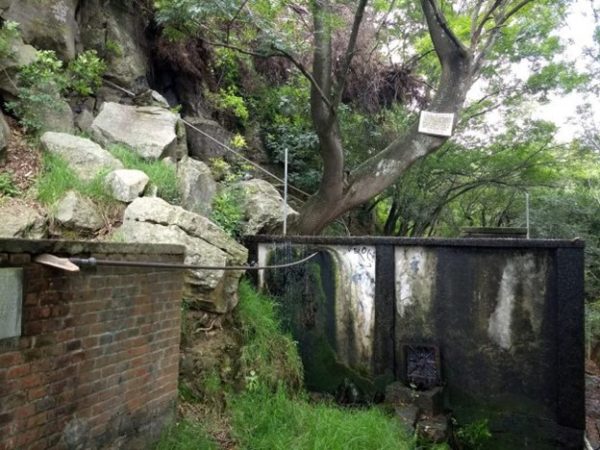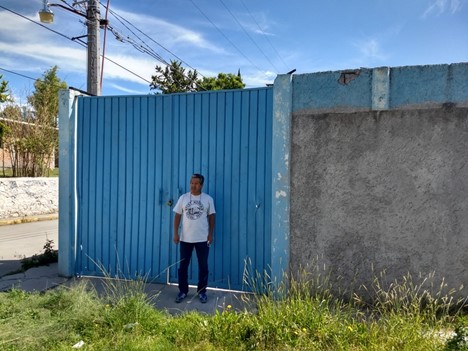Indigenous Peoples in Mexico Defend Their Right to Water

HAVANA TIMES – In the San Lorenzo Huitzizilapan Otomí indigenous community, in the state of Mexico –adjacent to the country’s capital–, access to water has been based on collective work.
“Public services come from collective work. What we have done is based on tequio (free compulsory work in benefit of the community), cooperation. The community has always taken care of the forests and water,” Aurora Allende, a member of the sector’s Drinking Water System, told IPS.
In San Lorenzo Huitzizilapan, a town of 18,000 people in the municipality of Lerma – about 60 kilometres west of Mexico City – some 10 autonomous community water management groups are responsible for the water supply in their areas.
The first community system emerged in 1960 to meet local needs. “The water falls by gravity and we pipe it. The water runs through 200 drains that come from the hill, and there are two or three wells for the smaller neighbourhoods,” explained Allende, whose father started the first autonomous system in the community and who is a homemaker in addition to her community work.
The Drinking Water System serves some 150 families who pay about two dollars a month for the maintenance of the facilities.
Huitzizilapan, whose name means “river of hummingbirds” in Nahuatl and which owns about 4,000 hectares of land, half of it forests, is part of a strip of water factories that supply the Cutzamala System, the set of dams that supplies water to both the capital and the state of Mexico.
The Otomi people are one of Mexico’s 69 native groups, numbering some 17 million people, out of a total national population of 128 million. More than400 000 indigenous people belonging to five groups live in the state of Mexico.
Despite being guardians of the cultural and biological heritage of this Latin American country, they suffer discrimination and poverty. Almost 50 percent of the headwaters of Mexico’s watersheds are in areas inhabited by indigenous peoples and the regions with the highest rainfall are located in their territories.
The 1992 National Water Law does not recognise the rights of native inhabitants and allows the government’s National Water Commission (Conagua) to grant water permits throughout the country to anyone who applies for them. In 2012, a constitutional amendment recognised the human right to water. However, approval of a new law to implement the constitutional reform is still pending.
In addition, water faces the three horsemen of the apocalypse: the effects of the climate crisis, such as drought; overexploitation; and pollution.
Native peoples suffer from restrictions on new uses of water, put in place by Conagua with the argument that there are water shortages. Today, at least nine of these measures apply in eight of Mexico’s 31 states and the federal district of Mexico City.
Autonomous initiatives have become a mechanism for organising and defending access to water, despite the fact that they are not recognised by law, although they are not prohibited either. But there is no estimate of how many operate in the country nor has there been an assessment of how they function.
But for Conagua and the state-owned Federal Electricity Commission, these systems are a nuisance, because they fall outside the jurisdiction of the former and, for the latter, electricity to operate wells serves as a means of pressure to promote the municipalisation of the service, due to the costs paid by the independent systems.

Struggles over water
The water issue is a reflection of how native groups are treated in Mexico, because Conagua has granted individuals, companies and municipalities more than 29,000 concessions for the use of water in their territories, covering about 35 billion cubic meters.
For that reason, water is a recurring source of political, social and environmental conflicts in this country with the second-largest population and economy in Latin America and the third largest area, as indicated by recent reports.
Mexico faces a high risk of water stress, surpassed in the region only by Chile, according to the Aqueduct Water Risk Atlas developed by the Aqueduct Alliance, made up of governments, companies and foundations. In 2021, the country has been suffering from a severe drought that has had a major impact on agriculture, livestock and water availability in urban centres.
The 2015 report “Conflicts among Indigenous Peoples and Communities of Mexico” prepared by the official National Institute of Indigenous Peoples and seen by IPS, documents 246 disputes over agrarian issues, mining projects and violations of indigenous rights.
Of these, 16 involve water issues, such as the construction of thermoelectric plants, aqueducts and hydroelectric dams.

The 2019 “Report on Violations of the Human Rights to Drinking Water and Sanitation in Mexico,” drawn up by a collective of NGOs, provides a more detailed picture of conflicts over water, outlining 72 cases of violations of the right to water in 16 states.
The municipality of Coyotepec, also in the state of Mexico, illustrates like few others the struggle for water.
In June 2013, the municipal government tried unsuccessfully to take control of the water service, a move that was opposed by the public. The local water supply was managed by the autonomous Coyotepec Drinking Water Administration (AAPCOY), founded in 1963 to provide water to the town of about 41,000 people.
In May 2016, local residents prevented a municipal consultation because they considered it was rigged and aimed at approving the transfer of water to nearby real estate projects.
“The conflict persists. The state government saw that we were winning the battle and forcibly removed us. We oppose municipalisation, because it is the door to the privatisation of the service. They want to take control of our water,” a retired accountant who is a member of the June 9 Popular Front in Defence of Natural Resources of Coyotepec told IPS.
In Coyotepec, which means “place of coyotes” in Nahuatl, located about 40 kilometres north of Mexico City, AAPCOY serves some 12,000 members, who pay about 2.50 dollars a month, and is complemented by two other water systems. For its part, Conagua manages 11 wells and a pumping plant.
In San Lorenzo Huitzizilapan, Coyotepec and other localities with a majority indigenous population, there were violations of rights to water availability, physical and economic accessibility, water quality, as well as access to information and participation, accountability and justice, according to organisations that defend the right to water.
Seeking a remedy, indigenous peoples have sought legal protections that denounce the breach of the International Labour Organisation’s Convention 169 on Indigenous and Tribal Peoples and the United Nations Declaration on the Rights of Indigenous Peoples of 2007, which recognise native territory and the right to water.
Claudia Gómez, a non-governmental Lawyers Collective member, and Wilfrido Gómez, the head of Social Data Ibero at the private Iberoamerican University, agree that legal questions are at the root of the problem.
“There are not enough legal mechanisms to guarantee the protection of water as part of indigenous territory,” Claudia Gómez told IPS. “Neither the Water Law nor the constitution has adequately regulated water for the people. There is a battle to gain recognition for native practices and use of water.”
Wilfrido Gómez (no relation) said that “if water is available and if they meet certain legal requirements, companies are given concessions, but for the communities it is more complicated. Control over water is gained by whoever has the money to obtain permits. One implication is the widespread dispossession of land and water, which go together.”
Due to the effects of the COVID-19 pandemic and the urgent need for clean water, the U.N. Department of Economic and Social Affairs urged governments in its 2020 report “Indigenous Peoples and the COVID-19 Pandemic: Considerations” to improve access to and management of water and sanitation, especially for indigenous people in remote villages, and said this should include “relevant indigenous practices, such as watershed management.”
Despite this situation, Mexico’s National Indigenous Peoples Program 2018-2024 does not mention water once.

Caught between risks and promises
The solution seems to lie in a new water law, which has been held up in the Chamber of Deputies. The lower house of Congress has received at least six initiatives, including the first in the country developed by organisations defending the human right to water, indigenous peoples, agricultural producers and academics.
After seven years of forums and workshops, the citizens’ initiative was built on 12 consensuses.
These include respect for the water rights of local communities, a ban on water permits for toxic mining and fracking endeavours, an end to the hoarding of water permits, prevention of the privatisation of water services, a guarantee of full access to information and sufficient public funds for water supply.
Allende said “all they want is our water and our forests. There are projects for bottling plants and real estate developments in the highlands. They’re doing everything they can to have access to that area. There is a threat of urbanisation; we are afraid that they will enter our territory.” She lamented that they receive no compensation for taking care of the forest and the water.
Claudia Gómez and Wilfrido Gómez advocate the approval of the citizens’ initiative.
“We believe that the approval of a new law that recognises the rights of indigenous peoples and local communities is necessary. There should be conservation and care policies, so that there is no shortage of water in other regions. Therefore, we ask for consensual regional plans, which are achieved through planning by region or basin, and thus priorities are selected,” said the lawyer.
Wilfrido Gómez stressed that the citizens’ initiative provides tools for controlling water concessions. “Very soon there will come a time when there will be no access to water and there will be no guarantees for the right to it. Today, Conagua has no legal tools to deny or withdraw concessions,” he explained.
In Coyotepec, the solution lies in new elections to lead AAPCOY and “oust the usurpers”, in Velázquez’ words, although it is also necessary for the beneficiaries to pay on time for the service, one of the shortcomings of the system.
“Thus, we could return to representative management that guarantees the right to water,” said the activist.
—–
*The project for this report was the winner of the Journalistic Research Grants on community water management in Mexico, a Fundación Avina, Cántaro Azul and Fondo para la Paz initiative. But this resulting content is solely the responsibility of IPS.
Read more features here on Havana Times






Comments are closed.